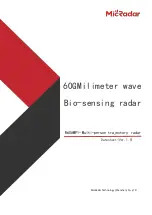
20. Alerts
20-3
20.6 Description of the Alert Priority System
The permanently visible alert is the top most urgent alert at any moment
•
Alerts have priority from 1 to 2 to control urgency. Priority 1 is the highest Priority 1 and 2 indicate
unacknowledged state. Priority 8 and 9 indicate acknowledged state. The "list of alerts chapters" shows the
priorities for each alert with following syntax: "/1" at the end first line means priority = 1, "/1/8" at the end of
first line means that priority is = 1, if unacknowledged and priority = 8, if acknowledged but the state of alert
still exists.
•
Warnings have priority from 3 to 7 with same kind of syntax as alerts. Priorities from 3 to 7 indicate
unacknowledged state. Priorities from 10 and 14 indicate acknowledged state. You may view the alerts in the
Alert Queue. Place the cursor on the alert text and then push the right mouse button. See the example below.
How to read the Alert Queue (first row as an
example):
•
First digit "05" indicates alarm priority.
•
Second three digits "712" indicate alarm number.
•
Third six digits indicate time.
•
Text indicates reason of alarm "Position source
change".
•
The example shows how alarm 712 changes its
priority from 05 to 12 after it is acknowledged.
How to read the Alert Queue for an alert from a
connected sensor:
•
First digit "07" indicates alarm priority.
•
Second four characters "POS2" indicate source. In
this example sensor connected to serial line (POS2 =
Position equipment 2).
•
Third three digits indicate number from ALR.
•
Next six digits indicate arrival time of ALR.
•
Followed characters are text from ALR
Summary of Contents for FCR-2107 series
Page 42: ...1 Operational Overview 1 20 This page intentionally left blank...
Page 154: ...5 AIS Operation 5 28 This page intentionally left blank...
Page 255: ...7 Vector Chart Material 7 83 Recommended track defined by two beacons...
Page 256: ...7 Vector Chart Material 7 84 Recommended track defined by a building and a beacon...
Page 257: ...7 Vector Chart Material 7 85 Measurement mile tails tails...
Page 298: ...9 Chart Alerts 9 14 This page intentionally left blank...
Page 322: ...10 Route Planning 10 24 This page intentionally left blank...
Page 368: ...14 Backup Operations 14 6 This page intentionally left blank...
Page 404: ...16 Recording Functions 16 16 This page intentionally left blank...
Page 406: ...17 NAVTEX Messages 17 2 This page intentionally left blank...
Page 416: ...19 Parameters Setup 19 8 This page intentionally left blank...
Page 457: ...Appendix 2 IHO ECDIS Chart 1 AP 5 Nature and Man made features Port features...
Page 458: ...Appendix 2 IHO ECDIS Chart 1 AP 6 Depths Currents etc Seabed Obstructions Pipelines etc...
Page 459: ...Appendix 2 IHO ECDIS Chart 1 AP 7 Traffic routes Special areas...
Page 460: ...Appendix 2 IHO ECDIS Chart 1 AP 8 Aids and Services Buoys and Beacons...
Page 461: ...Appendix 2 IHO ECDIS Chart 1 AP 9 Topmarks Color test diagram...
Page 462: ...Appendix 2 IHO ECDIS Chart 1 AP 10 Mariners navigational symbols...
Page 469: ...Appendix 3 Interpreting S57 Charts AP 17 Fog signals Radars Services...
Page 476: ...Appendix 3 Interpreting S57 Charts AP 24 This page intentionally left blank...
Page 511: ...Appendix 5 Digital Interface AP 59 NRX NAVTEX received data...
Page 544: ...Appendix 6 Parts List and Parts Location AP 92 This page intentionally left blank...
Page 550: ...This page is intentionally left blank...
Page 556: ......
















































